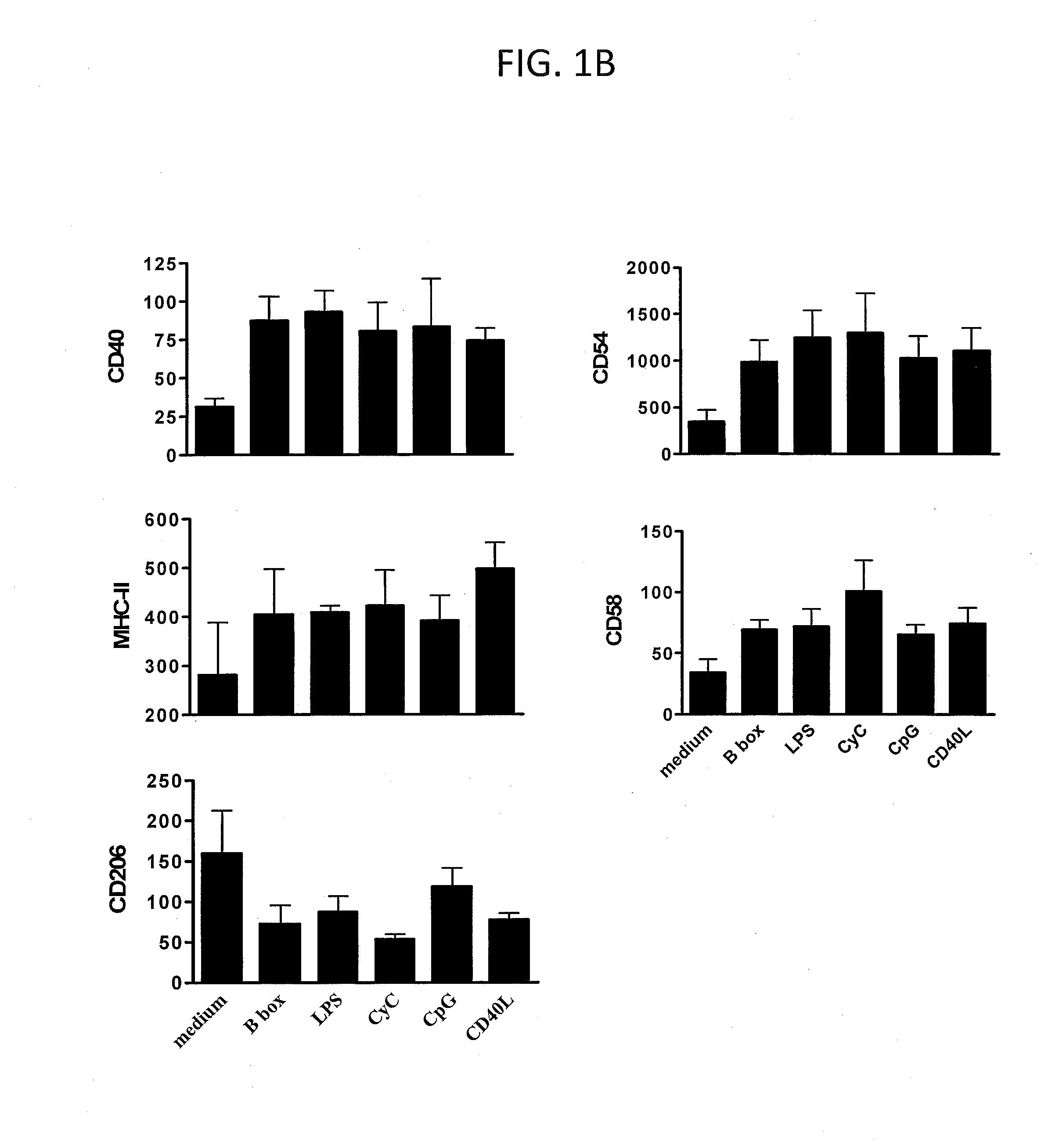Immunogenic compositions comprising hmgb1 polypeptides
a polypeptide and composition technology, applied in the field of immunogenic compositions, can solve the problems of limited use of immunogenic or non-protective vaccine adjuvants, often not being able to use adjuvants to increase the immunogenicity of synthetic vaccines, and reducing unnecessary inflammation, so as to increase the immunogenicity of antigens, easy and efficient use, and minimize unnecessary inflammation
- Summary
- Abstract
- Description
- Claims
- Application Information
AI Technical Summary
Benefits of technology
Problems solved by technology
Method used
Image
Examples
example 1
[0113]The initation and control of an adaptive immune response is critical for health and disease. DCs are central to these processes (1, 2). DCs detect evolutionarily conserved molecular structures unique to foreign pathogens, such as LPS (3), DNA molecules containing unmethylated CpG motifs (4); they also respond to endogenous signals of cellular distress or damage (5-8). Interaction with these agents stimulates DCs to undergo the process of maturation. Endogenous factors that cause DCs to mature are an important class of stimuli that might contribute to the initiation or perpetuation of an immune response against pathogens. On the other hand, if these factors are released chronically and / or in the bsence of infection, they could potentially contribute to the activation of self-reactive T cells and play a role in the development of autoimmunity (5, 6).
[0114]HMGB1, a nuclear and cytosolic protein, was originally identified as an intranuclear factor with an important structural func...
example 2
[0134]As shown above (Example 1, and see, Messmer et al. (41)) HMGB1 and its B box domain are potent stimuli for maturation of human monocyte-derived DCs. Here we demonstrate that smaller peptide fragments that map to the B box domain also showed stimulatory activity on DCs. Rovere-Querini et al. (39) have recently shown that HMGB1 is a crucial component of necrotic lysates that can induce maturation of murine DCs and that it has adjuvant activity in vivo. However, it has not been investigated whether the HMGB1 alone is sufficient to induce maturation of murine DCs. While the potential for whole HMGB1 protein as adjuvant has been demonstrated there are limitations for using large recombinant proteins as adjuvants and it would be more practical and desirable to use synthetic small protein fragments or ideally peptides as adjuvants due to the uncomplicated production and purity obtained.
[0135]We show in this study that the HMGB1 B box domain, which is about a third of the size of HMGB...
PUM
| Property | Measurement | Unit |
|---|---|---|
| OD | aaaaa | aaaaa |
| pH | aaaaa | aaaaa |
| volume | aaaaa | aaaaa |
Abstract
Description
Claims
Application Information
 Login to View More
Login to View More - R&D
- Intellectual Property
- Life Sciences
- Materials
- Tech Scout
- Unparalleled Data Quality
- Higher Quality Content
- 60% Fewer Hallucinations
Browse by: Latest US Patents, China's latest patents, Technical Efficacy Thesaurus, Application Domain, Technology Topic, Popular Technical Reports.
© 2025 PatSnap. All rights reserved.Legal|Privacy policy|Modern Slavery Act Transparency Statement|Sitemap|About US| Contact US: help@patsnap.com



